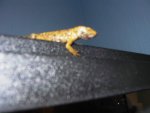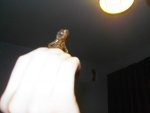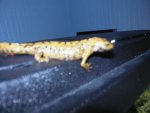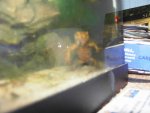si
New member
- Joined
- Jul 8, 2009
- Messages
- 27
- Reaction score
- 0
- Points
- 0
- Location
- West Yorkshire
- Country
- United Kingdom
Hi, ive recently noticed my cfb newt is off his food and seems very weak, on closer inspection i found he had a milky coloured substance near his mouth, ive read through all the illness articles on caudata culture but can't see any real simularites in the problems described. Can anyone identify what the problem is and how i could help him?? any help would be greatly appreciated.
P.S i do weekly water changes and remove uneaten food.
Due to winter weather the tank temp has dropped it is usually between 16-19 degrees but its currently between 11-14 degrees, i know they like it cool, but would the change be a factor?
Ive attached some pictures to see if anyone could help, thanks a lot.
Simon.
P.S i do weekly water changes and remove uneaten food.
Due to winter weather the tank temp has dropped it is usually between 16-19 degrees but its currently between 11-14 degrees, i know they like it cool, but would the change be a factor?
Ive attached some pictures to see if anyone could help, thanks a lot.
Simon.




